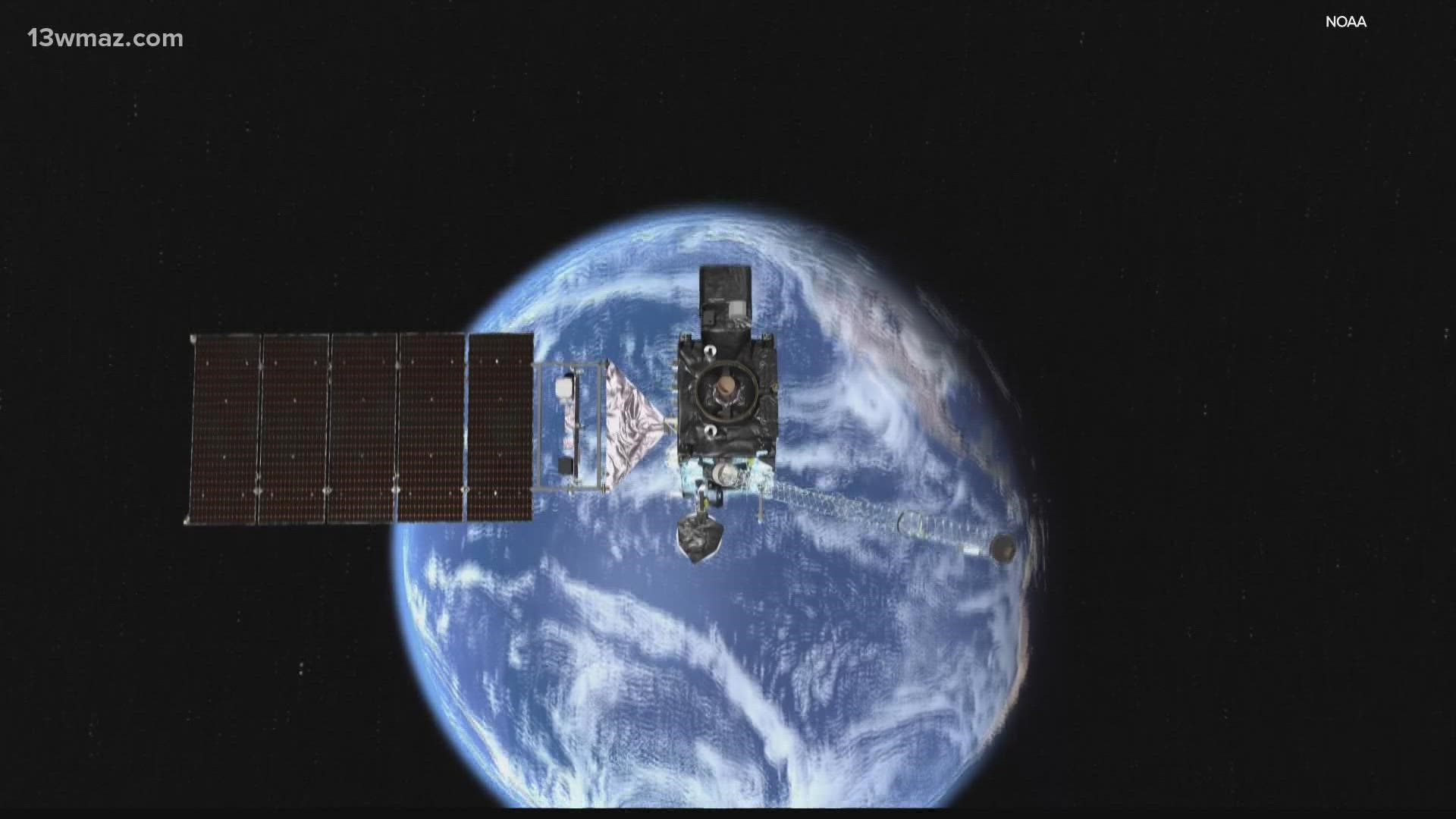MACON, Ga. — In just a matter of weeks, meteorologists will have a new tool in the sky keeping an eye on the atmosphere over the United States. A new satellite, currently named GOES-T, will launch from Cape Canaveral, Fla.
This groundbreaking satellite program began with GOES-R, the original name for GOES-16, which launched in Nov. 2016.
Whenever weather satellites are launched, their names are transitioned from letters to numbers. The second of the series, GOES-S, which is now known as GOES-17, was launched in 2018.
Shortly after GOES-17's launch in 2018, engineers with NOAA and NASA discovered a problem -- there was an issue with the cooling systems onboard. That's right, aboard the satellite, already in orbit, about 22,000 miles above Earth’s surface.
Pam Sullivan, the NOAA program director for GOES-R, says the problem is resulting in some missing data.
“We actually are getting 92% percent of the intended data right now," said Sullivan. “So, most of the time the satellite works just fine, but during the warmest times of day it actually runs into problems and we can't keep the detector data good.”
The good news is engineers were able to fix that problem on the two yet to launch.
Originally scheduled for May 2020, the cooling system issue delayed the launch of GOES-T so the repair could be made.
GOES-T will take over GOES-17's domain, GOES-West, which is the western United States and the Pacific Ocean. GOES-17 will then become the backup.
While it doesn't watch Central Georgia directly, GOES-West still plays a big part in our forecast. Dylan Lusk, a meteorologist with the National Weather Service in Peachtree City, says the information provided by this domain is used by models to predict our weather.
“Let's say you have a giant low-pressure system that occurs over Japan,” said Lusk. “That system ends up impacting the jet stream, creates waves and ripples in it that basically flow all the way through Alaska and the Pacific, and all the way into the west coast of the United States, and then eventually impacts us.”
The launch for GOES-T is scheduled for March 1 from Cape Canaveral, Fla. Once in orbit, NOAA and NASA will run a series of tests with the goal of getting the new satellite in operation as soon as Jan. 2023.



